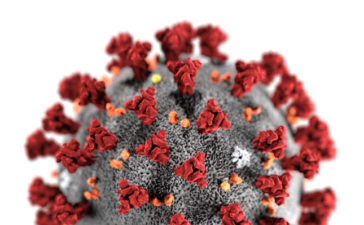In December 2019 WHO held a meeting of its Guidelines Development Group. This was to consider the latest evidence on the use of the Molbio Truenat MTB/RIF test as well as the Xpert MTB Ultra.1 The outcomes of the meeting will be disseminated as updated WHO guidelines by April 2020.In the meantime WHO has issued a Rapid Communication on the use of Molecular Assays as initial tests for the diagnosis of tuberculosis and rifampicin resistance.
The Truenat TB test is a new molecular test that can diagnosis TB in one hour as well as testing for resistance to the drug rifampicin. The TrueNat test has been developed by the Indian firm Mol Bio Diagnostics Pvt Ltd Goa. It’s development has been funded by Bigtec Labs, India.
The performance of Truenat MTB, MTB Plus and MTB-RIF Dx assays show comparable accuracy to the Xpert MTB/RIF and the Xpert Ultra for TB detection (Truenat MTB and Truenat MTB Plus) and for sequential rifampicin resistance detection (Truenat MTB-Rif Dx).
The Truenat MTB and MTB Plus assays also show comparable accuracy to the TB-LAMP assay as replacement tests for sputum smear microscopy. The data for Truenat MTB-Rif shows similar accuracy to WHO-approved commercial line probe assays.
Dr Balram Bhargava, the Director General of the Indian Council of Medical Research, said that this endorsement of the technology by WHO would enable low and middle income countries to procure TrueNat for tuberculosis diagnosis and Rifampicin resistance, so supporting the elimination of the disease in developing countries.
WHO also said that the evidence reviewed supported the continued use of Xpert MTB/RIF and Xpert Ultra as initial diagnostic tests for pulmonary TB in patients of all ages.
This test for TB uses a sputum sample taken from each patient. Only about 0.5 ml of the sample is required compared with about 1 ml needed for the American Genexpert machine.
With this test samples can be tested as soon as a patient with symptoms of TB is seen. As the entire set-up is both battery operated and portable, it can be used at the most basic parts of the health care system. This is where this test differs from GeneXpert. GeneXpert is most suitable for being used where several tests can be done at the same time.
The standard smear microscopy test has limitations. It usually finds it difficult to diagnose TB when the bacterial load is less than 10,000 per millilitre of the sputum sample, giving erroneus negative results for some patients. The test works by the rapid detection of TB bacteria using the polymerase chain reaction (PCR) technique.
The machine looks for the DNA specific to the TB bacteria. If the machine detects it, it then uses PCR to copy (amplify) small segments of DNA and this DNA can then be used in many different laboratory procedures.
Any resistance to rifampicin (RR) is detected by doing a second RTPCR (Reverse transcription polymerase chain reaction).
Automated battery operated devices are used for the extraction of DNA (Trueprep Auto device) amplification (TrueNat MTB chip) and reading the presence of specific genomic sequences (TrueLab PCR analyser).
It takes about 25 minutes to do the DNA extraction. It takes another 35 minutes to diagnose TB. It takes an additional one hour for testing for rifampicin resistance.
The Genexpert machine and the TrueNat machine are designed to be used in different circumstances. The TrueNat machine is more of a point of care machine, which is not fully automated. It is designed for situations where there may not be electricity and where the need is for one test to be done at a time.The Genexpert is designed for larger volumes and needs a reliable electricity supply.





